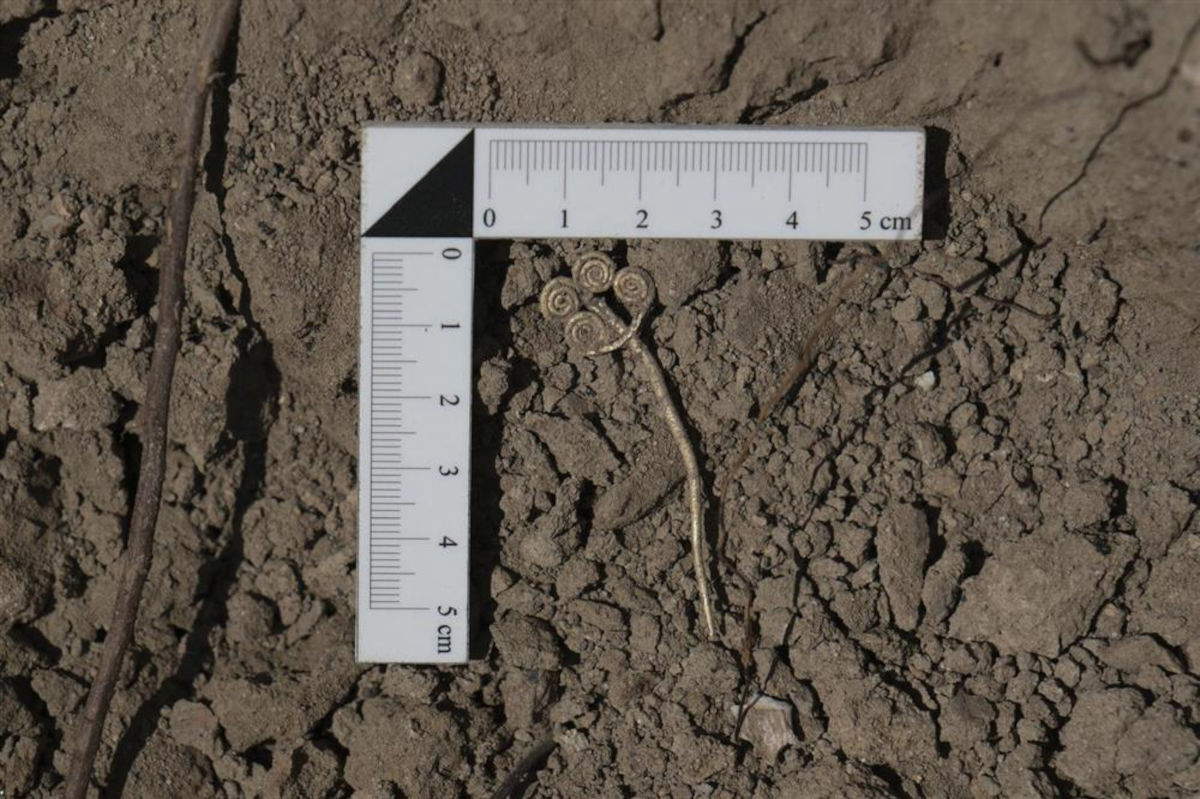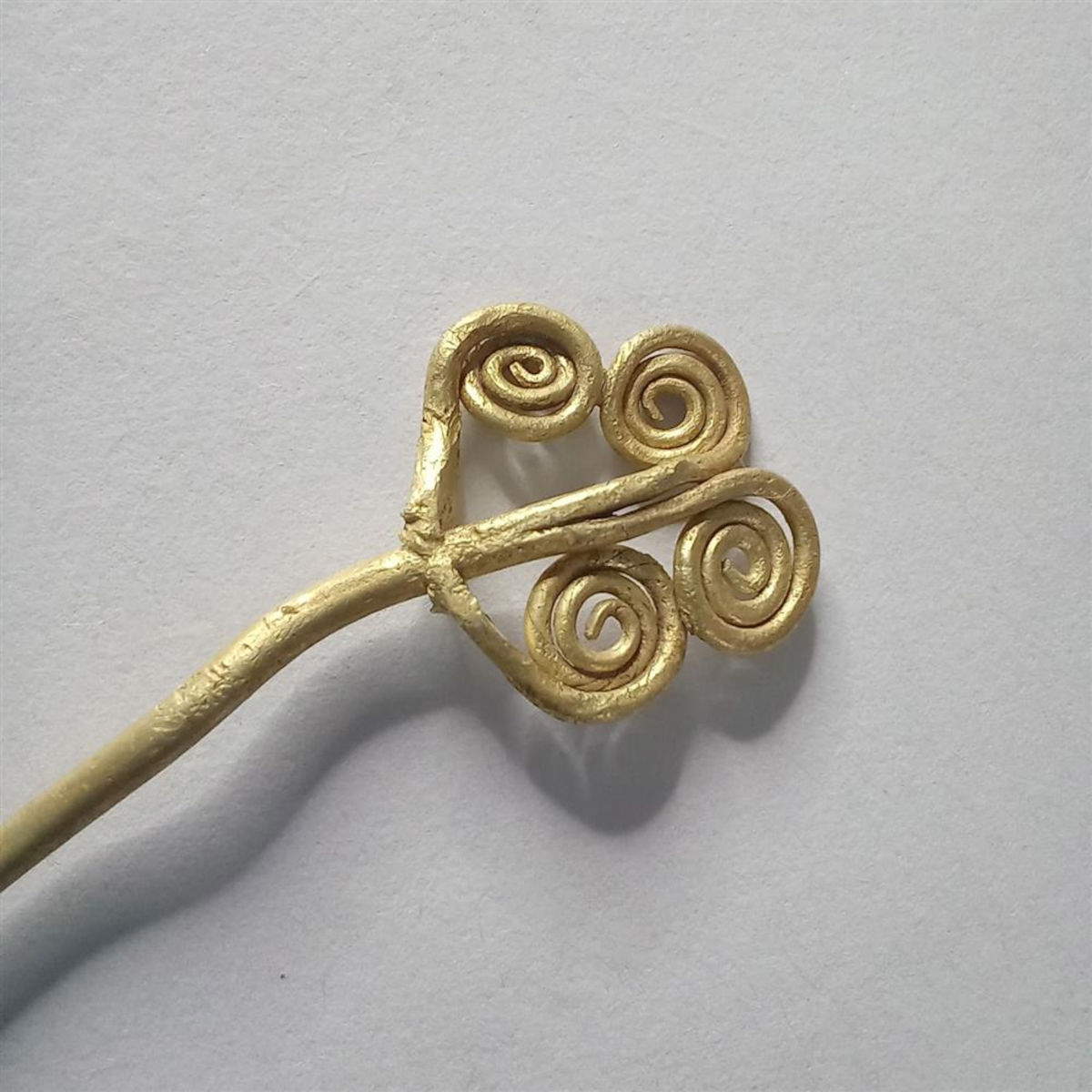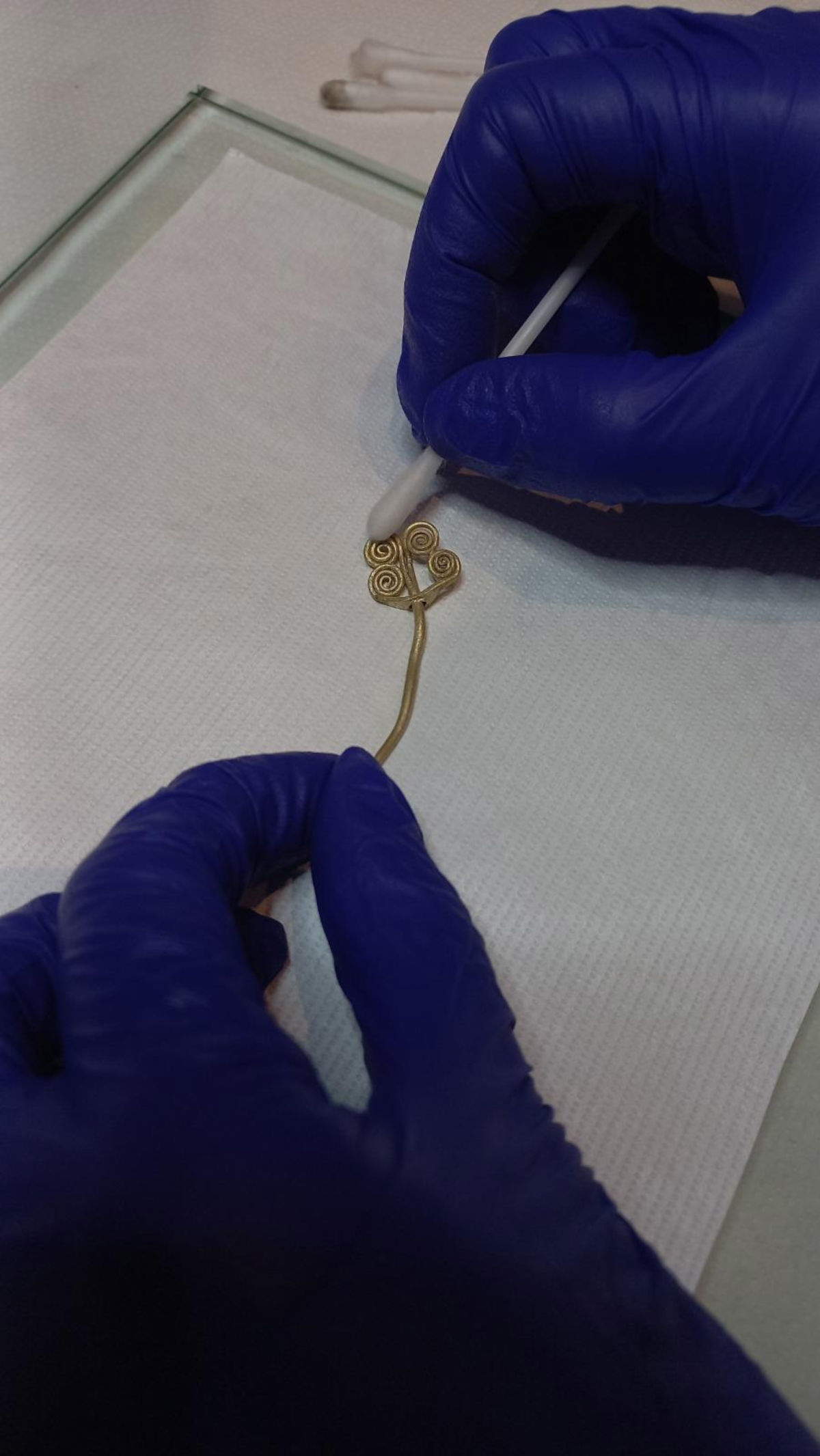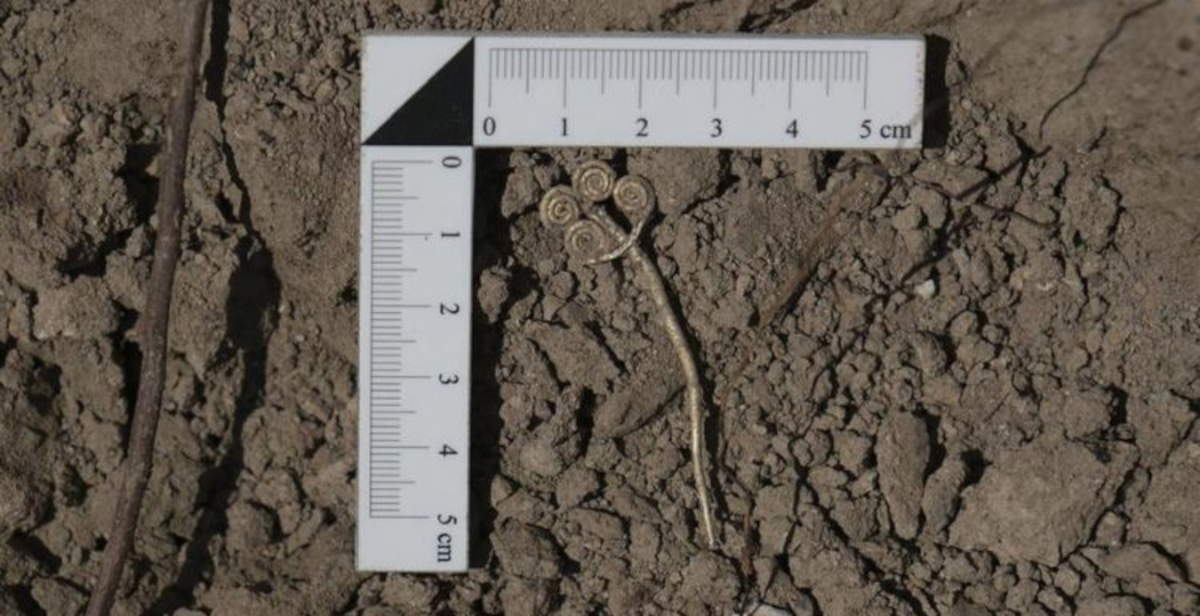Excavation campaigns conducted at the archaeological site of Troy (ancient Ilium in Turkey) have unearthed a discovery that promises to enter fully into the world archaeological literature. During research in 2025, carried out as part of the Geleceğe Miras(Inheritance to the Future) project sponsored by the Turkish Ministry of Culture and Tourism, a valuablegold broche (a clasp) dating from theAncient Bronze Age, dated to around 2500 B.C., was found. The artifact, found within the layers associated with Troy II, represents material evidence of extraordinary relevance to the reconstruction of the origins of Trojan civilization.
Used as a symbol of power and social status, the broche features a golden ring whose type, according to scholars, places it among the most important archaeological finds of the last hundred years. Its exceptionality is further enhanced by the fact that only three specimens of this type are known in the world, and the one that emerged at Troy turns out to be the best preserved of those documented so far. The find has also made it possible to clarify one of the most debated chronological knots in Troy research. Indeed, the presence of the broche in the stratigraphic levels attributed to Troy II has provided crucial elements for defining the dating of this settlement phase. While until now scholars oscillated between a chronological framing between 2300 and 2200 B.C.E. and the hypothesis of an earlier origin, the discovery makes it possible to fix the beginning of Troy II more precisely around 2500 B.C.E. This is a major advance in understanding the historical sequence of the site and the transformations that affected the Trojan community during the Early Bronze Age.

The broche was not the only find to surface during the investigation. In the same stratigraphic context , archaeologists also identified a bronze brooch and a rare jade fragment. The latter item, in particular, stands out for its rarity within the luxury grave goods of the period. According to early hypotheses, the stone, worked with extreme care, may have been employed as a decorative element, perhaps set in a ring or used as personal adornment. In line with the principle of enhancing the value and enjoyment of cultural goods in their places of origin, the finds will be on public display at the Troy Museum. The choice meets the objective of allowing visitors and scholars to observe and study the artifacts directly in the territorial context in which they were made and used more than 4,500 years ago. The future exhibition will also provide an opportunity to explore aspects of Trojan material culture that have been little documented to date, opening up new research perspectives on the role of luxury goods, social hierarchies and trade dynamics in the Bronze Age.
“A 4,500-year-old gold broche and a jade stone have been unearthed in Troy!” says Minister of Culture and Tourism, Mehmet Nuri Ersoy. "During the excavation campaigns, which have been going on for more than 160 years, a gold ring broche dating back to the Early Bronze Age was found, along with a very rare jade fragment. This broche, among the only three known specimens in the world and the best preserved in the world, is considered one of the most important finds of the past hundred years. The find, which emerged from the layers of the city of Troy II, can be dated to around 2500 BC. The jade stone, on the other hand, stands out as one of the luxury goods used 4,500 years ago. These extraordinary artifacts will soon be on display at the Troy Museum. I thank the teams of the General Directorate of Cultural Heritage and Museums and all the people who contributed with great dedication as part of the Geleceğe Miras(Legacy for the Future) project."


 |
| Troy, 4,500-year-old treasure resurfaces: gold broche and rare jade stone discovered |
Warning: the translation into English of the original Italian article was created using automatic tools. We undertake to review all articles, but we do not guarantee the total absence of inaccuracies in the translation due to the program. You can find the original by clicking on the ITA button. If you find any mistake,please contact us.